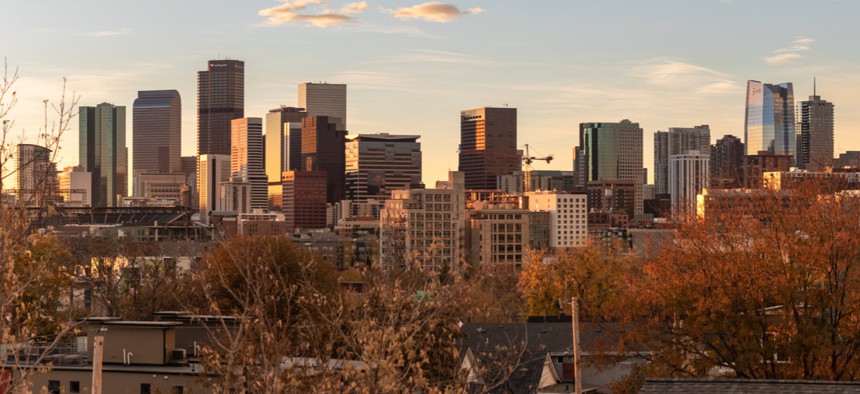Election Reforms in Colorado Lead to Surge of Unaffiliated Voters

Denver, Colorado Shutterstock

Connecting state and local government leaders
Four months after the state’s open primary, unaffiliated general election voters turned out in record numbers.
This month’s midterm elections underlined long-running flaws in the nation’s elections systems, a state-to-state patchwork of creaky and insecure procedures and technologies that have drawn lawsuits from all sides and fueled intensifying skepticism on the part of frustrated and angry citizens.
Election administrators have been criticized, often on the back of strong evidence, of incompetence and partisan bias—of working gerrymandered voting districts and outdated operations vulnerable to partisan tinkering and other security breaches.
Administrators aiming to make change might look to Colorado.
Over the last half decade, the Centennial State has embraced election reforms that have boosted participation and delivered reliable tallies with minimal wait times and operational glitches.
Colorado—like Oregon and Washington—runs vote-by-mail elections. In Colorado, beginning after 2013, all registered voters have received ballots in the mail. They can mail their ballots to or drop them off at their county clerks offices, or they can cast their ballots at in-person voting centers during early voting periods or on Election Day.
In the recent midterm elections, Colorado notched the second-highest turnout rate in the nation, according to the U.S. Elections Project. It turned out 61.9 percent of its voting-eligible population. Minnesota topped the ranking by turning out 64.3 percent.
Notably, in an era when partisanship seems to draw the lion’s share of headlines across the country, the most recent reforms in Colorado have been made with an eye to better serve the state’s large segment of independent voters—that is, those officially unaffiliated with any political party.
Unaffiliated voters have long been the fastest growing bloc of voters in the state. They made up 31 percent of voters in 2010, nearly 36 percent in 2014, and nearly 38 percent this year.
The trend seems likely to continue. Young Coloradans may feel increasingly less motivated to affiliate with a party.
In the midterm, Colorado’s unaffiliated voters cast 34 percent of the total vote. Among voters younger than 45, however, unaffiliated voters cast 45 percent of the vote.
State officials see the writing on the wall.
Colorado voters in 2016 passed Proposition 108, which opened primary elections to unaffiliated voters. This past June, the state held its first open primary elections. Unaffiliated voters could either request in advance one party’s ballot or simply wait and receive both party ballots and then choose only one to fill out and return.
The primary elections “experiment,” as many observers were calling it, was fairly complicated, but public education efforts seemed to pay off. As University of Denver political science professor Seth Masket put it, unaffiliated Coloradans submitted 24 percent of ballots this year, “an increase from zero” in any previous election—and very few of those ballots were spoiled.
As it turned out, the primaries were only a warm up for the general election, a test run that may have primed the pump for continuing greater turnout. Four months after Colorado’s open primary, unaffiliated general election voters turned out in record numbers. According to the secretary of state, 878,360 unaffiliated voters cast ballots in the midterm election, compared to 849,610 Democrats and 813,644 Republicans.
The midterm election again demonstrated again that non-partisan fairness in elections administration clearly matters to Colorado voters of all stripes. More than 70 percent of all voters in the state supported proposed state constitutional Amendments Y and Z, which outlaw gerrymandering.
The amendments will establish independent commissions of four Republicans, four Democrats and four unaffiliated voters to oversee map-drawing for congressional redistricting and for legislative reapportionment.
“For the first time, Colorado has set a standard that gives unaffiliated voters an equal voice and an equal seat at the table on an issue that greatly impacts our democracy,” wrote former Colorado Secretary of State Bernie Buescher and former state Rep. Kathleen Curry. “We will see more competitive districts that will hold representatives more accountable to their constituents.”
John Tomasic is a journalist who lives in Seattle.

NEXT STORY: 'Pretty Much a Failure': HUD Inspections Pass Dangerous Apartments Filled With Rats, Roaches and Toxic Mold




